"Search Engine Journal" - 7 new articles
- Google Combines its Most Important Products into Google TV
- PopScreen & Jinni : Taking Video Search to the Next Level of Innovation
- Optimising TV for SEO: Thinkbox Research Highlighting TV's Impact on Search
- Create Your Social Media Life Stream at Wordpress Blog
- Geo-Listing Hijackings A Real Concern
- The 5 Fools You Meet In Social Media
- How MicroFormatting Will Improve Mobile Search
- More Recent Articles
Google Combines its Most Important Products into Google TV
So after all this year's of building up a very efficient search technology, a fast and lighweight web browser and a mobile computing platform, Google has finally unveiled its grandest plan of conquering the world – Google TV. Running on the byline – "TV meets web, web meets TV, Google TV", Google TV is both hardware and software and a little bit of more Google stuff.
Google TV will let you access all of your favorite websites, thanks to the built-in Google Chrome browser. It will expands the scope of what you can watch on your TV sets. That's from a few hundred cable channels to practically millions of entertainment channels from the web. This is in addition to the photo viewer, gaming console, music player and practically any content from the web.
Google TV also has search built-in on it. To find any channel or program that you want to watch, you simply key in the program's name on the Google TV search bar and Google TV will find it for you. If you don't have specific channel or program to watch, Google TV will give you some suggestion as you type a few characters on the search bar. Or you can search for programs on your Google TV homescreen.
Of course, Google TV was built on Google's open-platform, Android. This means, any third-party developers can play along ang develope Google TV apps that will further enhance the web-to-TV experience that we are all going to enjoy from Google TV. Sony and Logitech are the first two manufacturers who are planning to put Google TV inside of television, Blu-ray players and companion boxes. Distribution will be handled by Best Buy, not Google thankfully.
In short, Google TV is a pretty huge endeavor. Something which can either make or break depending on how users, us will respond to it and appreciate it. Can Google pull this one off? We'll see.
Check out the SEO Tools guide at Search Engine Journal.
Google Combines its Most Important Products into Google TV
PopScreen & Jinni : Taking Video Search to the Next Level of Innovation
Search engines catering to targeted niches are gaining in popularity. Most of them add a social interaction element, like sharing, embedding, and voting to keep their visitors longer on the site, and to "force" user profiling. It's a smart approach to search, in an industry dominated by Google. As far as video search is concerned, we already know that Google has its paws deep into the niche, with YouTube being the undisputed sovereign of the industry.
But, does this mean that there is no room for other video search engines? Hardly. In fact, there are so many, that attempting to make a complete list would be a challenging task. So instead of such a list, let's look at just two promising video search engines that each bring a new, and innovative element to the industry.
PopScreen Detects Trending Videos and Predicts What's Going Viral
PopScreen is a video discovery and organization service, an aggregator if you want, that grabs video content from all over the web. The site is akin to the likes of FriendFeed, with the difference being, you can de facto organize your videos into playlists, and play them with a nifty integrated player.
You can search PopScreens own database of aggregated content for new videos to "POP", import videos from your YouTube account (or from any other video sharing website), add videos to your PopScreen library via url or embed code, and even bookmark videos while you browse. The tool provided by PopScreen for the purpose is a drag-and-drop bookmarklet that sticks to the bookmarks bar in your browser and lets you save content on the go.
So, let's say you discover a video on a site where you don't have an account. Then all you have to do is to "POP IT" – click on the bookmarklet to save the video to your PopScreen account, in the corresponding playlist. Moreover, if you want to share the video you can, without having to browse back and forth. The bookmarklet lets you post updates to Twitter, Facebook, Digg and so on. It may sound like something complex, but I assure you it is not. PopScreen is extremely clean, and the UI is discoverable, and user friendly.
Yet aggregating content is not PopScreen's main forte. What users cannot see yet is a feature that will practically predict the future. Soon to be released, PopScreen's proprietary algorithm, PopScore, has the ability to detect trending videos and forecast what's going to be popular in the near future. This is not a YouTube-most-popular kind of feature, but something more complex that has huge potential for video advertisers.
Right now PopScreen monitors over 10000 sources of video content, including blogs, news outlets, directories, online portals, and many more; and indexes 20,000-25,000 videos daily. When PopScore goes live (a matter of days), then PopScreen will feature on its homepage a number of videos the algorithm deems potentially viral video sensations. If its forecasting proves accurate, then PopScreen will make history.
Jinni Is an Online Movie 'Taste Engine'
Jinni, defines itself as the first "Taste Engine" – a video search engine powered by semantic search technology and taste profiling. When searching with Jinni, your browsing data is aggregated, and results are served based on personalized recommendations. These recommendations are made possible by the core of the engine – the Movie Genome (created by movie professionals) that contains several thousand "genes" assigned to each title to describe plot, mood, style, setting, soundtrack and more – a rich alternative to the usual genre language.
Unlike PoPScreen, which is a fresh beta startup, Jinni is already a longstanding beta veteran, with a strong community and a few awards under its belt. Jinni's niche is not as broad as PoPScreen's, that will aggregate everything you want as long as it is video content. Jinni is about movies and TV shows, and finding/recommending what you like.
Let's say you want to watch a movie starring Jeff Bridges. You type in your search term, and Jinni comes up with several results – all relevant (it is that refined). You click on your favorite and Jinni takes you to a place where you can read movie reviews and find how to watch it – either by renting it from Netflix, buying from Amazon, finding you a legal download stream or finding you a place where you could watch it for free (like Hulu, for example).
Both search engines bring important innovation to the online video market, and from this perspective alone, they are worthy of attention. Jinni found a strict niche, yet a niche with limitless possibilities. The company already has some strong partners like SeaChange, NDS and OpenTV, and the cable operators are watching it closely. The question is, who else is watching? Jinni would make a great acquisition for the likes of Hulu and Netflix. Even Amazon could use the algorithm to help its customers find more relevant video content. If you had to bet, what would your bet be: who is going to buy Jinni, and why?
As for PopScreen, it does not take much imagination to put its potential in perspective. A video aggregator is not such a big deal, no matter how nice, but a video prediction engine? That's another story.
Check out the SEO Tools guide at Search Engine Journal.
PopScreen & Jinni : Taking Video Search to the Next Level of Innovation

Optimising TV for SEO: Thinkbox Research Highlighting TV's Impact on Search
After attending a Thinkbox conference in Manchester a few months ago, it spurred on some thoughts around the expansive applications of SEO to other media channels; where so many marketing opportunities can be developed to develop an organic competitive advantage.
Working as part of an SEO team for MEC, a media buying and planning agency, and as part of the Digital and Interaction department, I'm lucky enough to work alongside the Broadcast, Press, Strategy and Analytics & Insights departments. In this kind of environment, you can imagine how exposed you might be to the many possible and actual integration opportunities across what we call Paid, Earned and Owned media campaigns.
With this in mind, it's got me thinking about how SEO can really benefit from such offline campaigns as TV…The idea that SEO campaigns can be solely described as on-site and off-site investment (typically link-building and social media optimisation), seems to be missing a trick. Now although what I'm about to say may well not apply to those companies with smaller marketing budgets, I believe it is very much applicable to major advertisers. In essence, SEO quite obviously, but indirectly benefits hugely from mass media channels.
So, where am I going with this? Well if SEO benefits from mass media, then shouldn't SEO consultants look to optimise these channels too? I believe that the UK media market is increasingly learning of ways to integrate these channels, and SEO appears to be an excellent example where long-term, brand visibility gains can be made if built in to the planning of the other media and marketing channels.
TV & SEO: A Case Study
In the last quarter of 2009, I started working on a media client whereby we developed an on-site and off-site SEO strategy, integrated with other media expenditure including PPC, social media and TV. Now look at what happened to the site's link-profile in December when the TV campaign was launched…
Now, I'd love to take the credit for such a large volume of links gained but in reality a chunk of these are from the affiliate campaign that took off post-launch (another positive from the TV coverage), and of course the PR and buzz across social media networks.
I chose this example simply because of how close I was to each area of media investment during this time, and the fact that this was taking an unknown brand to the market with only incremental inbound links gained through other (non-TV influenced) means prior to December. Really interesting to see such a profound uplift though, don't you think?
Anyway, so why does this matter? Well, it matters because of how marketing and media is managed; the planning, creativity, and of course the attributed ROI.
Looking at the relationship of TV and SEO
From the Thinkbox and Mediacom (a GroupM agency) research, it was noted that TV should not be seen as an isolated channel, with as many as 48% of the test group cross-consuming / dual-consuming. This means that as they are watching TV, or online, they are consuming the other media in tandem too.
A number of additional facts lifted from the Thinkbox study can be seen here, where:
- Using TV and online together results in 47% more positivity about a brand than using either in isolation
- The likelihood of buying or using a product increases by more than 50% when TV and online are used together
- Both TV and the internet are used for entertainment (TV, 80%; online 56%) and both have a significant influence on driving purchase (75% and 52%)
- The findings reinforce the need to ensure creative synergy between TV and online advertising and identify best practice for better effectiveness, which requires more than simply putting TV ads online
The creative synergy and media investment therefore needs to consider both mediums together, with our good old friend 'integration' rearing its head again.
Attribution
Attributing conversions to account for multiple media channels – offline and online – not just the final last-click digital attribution model, is going to be a huge area of interest for companies as we see the digital and non-digital medias merge more and more. This is an area of fascination within MEC, and something I received feedback following the recent SAScon session on attribution – where media strategists wanted to see more talk of on- and offline attribution modelling.
Whether you're a DR professional and TV seems too fluffy for your needs, just take a look at what brand response can deliver with the right creative, as part of TV campaigns too:
The so-called cross-pollination, halo-effect or multiplier-effect of memorable campaigns are big areas of influence when considering the ROI of each media channel, so shouldn't strategy and planning accommodate this as part of the mix?
Cost Centres
If TV is found to be benefiting SEO (or any other media channel for that matter) as it indirectly generates buzz, searcher demand and in-bounds links, then maybe, just maybe SEO teams should be paying in to the TV budget expenditure?
Wouldn't it be an interesting exercise to try and place a metric on the short-term and potential long-term organic gains made as a result of TV? Defining the real costs and ROI of Paid, Earned and Owned media has never been more complex.
Longevity & ROI
Few, if any, major marketing campaigns solely go for the mass markets without supporting this activity online – maybe previously, but not anymore. The web has become the go-to place for more information on the product or service you have just seen on TV.
If SEO can draw more life out of the TV investment than that seen by TV alone, then without a doubt, SEO should look to audit and optimise the TV and online campaign's to EARN share of voice in peoples minds for the long-term. Social media marketers can often look to benefit from this mass-exposure too – although not an area I'll spend another 1,000 words writing about, you can read more from the IAB and Thinkbox here.
Integration and Realism
There's a whole lot of talk about integration in the world of digital marketing but in all honestly it's incredibly difficult to activate in any sort of manageable way until a change in process and ownership takes place. Again, we're going to be presented with new challenges in years to come around how integration can continually take place across what was formally regarded as traditional (or even 'old') media and that of digital (or 'new') media.
I don't like the derogatory notion of one media channel believing that they are head and shoulders above the rest as, I'm sure any media strategist would agree, each client requires a totally bespoke approach to their marketing investment. Without TV, as an example, SEO may well not have the demand/traffic to harvest – and likewise, without SEO, a TV campaign could indeed be driving consumers in to a black hole, or worse, their competitors!
Without a doubt, integration across these channels is going to be a tough challenge for any marketer, but nothing beats a compelling challenge now does it?!
Check out the SEO Tools guide at Search Engine Journal.
Optimising TV for SEO: Thinkbox Research Highlighting TV's Impact on Search
Create Your Social Media Life Stream at Wordpress Blog
I registered the domain for my name – annsmarty.com – two years ago (to protect my online reputation) and since then I've had no idea what I should do with it. I don't like non-used domains, so I set up a blog there. I can't speak a lot about myself, so I didn't make it personal. Instead, I reviewed random tools now and then to have something there. Then the blog has slowly turned into my mini news-feed where I am sharing some news about myself.
Since I am very active at a number of social media sites, I decided to create a lifestream there to aggregate my web life a bit. And I figured that many of SEJ readers find this idea brilliant enough to make sense of their personal blogs and domains. So let me share how I created my social media lifestream page at WordPress blog.
1. Download and configure the plugin
The plugin I was using for that is LifeStream: a highly customizable and really sleek Wordpress plugin that supports multiple social media sites. It also doesn't have any fancy requirements:
- PHP 5.1 or newer.
- MySQL 5.0 or newer.
- WordPress 2.5 or newer.
So just install it and activate. The next thing to do is to configure the options:
- Date and hour format;
- Update interval;
- Number of items displayed;
- Link targets;
- The theme;
- Digest (Lifestream gives you the ability to create a new blog post at regular intervals, containing all of the events which happened in that time period.)
Once those basic steps are taken, proceed to adding your social media feeds (which will form the actual content of your Lifestream).
2. Add and configure your social media feeds
Lifestream supports dozens of most popular feeds including:
- Any blog RSS;
- Twitter;
- Delicious;
- Flickr;
- Digg;
- Facebook;
- Youtube;
- StumbleUpon, etc.
Well, see for yourself:
Each feed has it's own configurations. For example, for Twitter feed, you can:
- Select to hide your username;
- Filter out replies (to make the stream more relevant);
- Use your custom icon for the updates:
3. Publicize your life stream
After you have configured the setting and added your feeds, you should make it public at your blog. The plugin has a few options you can choose from:
- The easiest way is to use the normal context handler (works in pages and posts):

- Another method requires a custom WordPress page, or the use of a template, and is a simple function call:

- Yet another way is to just install the sidebar widget which can be also configured (set the number of updates, select the feeds to include in it, etc):
I found the plugin a great way to aggregate your social media life and share it with your (personal) blog readers.
Check out the SEO Tools guide at Search Engine Journal.
Create Your Social Media Life Stream at Wordpress Blog
Geo-Listing Hijackings A Real Concern

One of the more prominent Geo-Listing (a.k.a. local business listing) hijackings occurred in New Zealand. A florist was found guilty for hijacking competitor local business listings at Google Maps. The business owner was ordered to complete 100 hours of community service after it was discovered she changed the business listings of rival companies in Google Maps to direct traffic to her own business.
This is a real situation that can and does have an impact upon a business that is not paying attention to their local business listings. If your business relies on the local consumer market for its primary revenue and you are not clear about local business listings, then you need to get caught up real quick.
Hijacking the geo-listing of another company does require the hijacker to be fraudulent and thus this activity falls into criminal court versus a civil court. This is far from being merely a domain name registration and why the florist in New Zealand was found guilty.
For security purposes we are not going to identify how a criminal or competitor can actually make the changes and redirect phone numbers and web addresses, however, please be certain that it can be done. Oh, and incidentally, don't think that we're talking just about a competitor in your local area. Consider criminals from other countries where we have seen activity from continents like Africa and Asia.
Furthermore, since geo-listings are free to the business from multiple geo-listing websites, you, as the business owner, cannot expect these websites to provide high level of security. These websites are in the business of providing information, not security. Since there is a way for you to insure your own security, you will need to become an early adopter and engage!
Local Business Listing Primer
Feel free to read our previous articles on Geo-Marketing that explains the big picture of Local Business Marketing through Geo-Listings, Mobile Marketing and Geo-Social Marketing. We will stay focused on Geo-Listings for our discussions here.
Local business listings are the demise of the traditional yellow pages. If the traditional yellow pages have not already seen their coffin and at minimum a door stop, then free local business listings are the nails in the coffin. Certainly you will find that you can save money in this space.
Local business listings give the local business the ability to not only have their general information available, but photos, videos, coupons, offers, discounts, promotions to name a few item. Additionally these can be updated 24×7x365 24 hours per day. Certainly none of these are features of the traditional yellow pages.
The process gets even better. Not only do these listings show up on the first page of Google for a search result in which a local listing is appropriate, but they show up on mobile devices while local consumers are driving around town. Studies have shown that there is an increase in local search and local search via mobile applications on mobile devices. We won't get into all that detail here, but you can certainly search for the stats yourself.
Just in case you still are not convinced that you need to pay attention to your local business listing, think about the consumers walking through your store and writing reviews about their experience, products or services. If they don't like something they can twitter or write a review in any local listing website before they even make it back to the car.
These consumer reviews are very important because in part they determine your ranking amongst other local listing websites for a web search (vs. mobile search). They also have a tremendous value to the search engines, which is one of the reasons Google wanted to acquire Yelp recently.
Local Business Listing Security
So, let's get back to the issue of local business listing hijackings. To prevent this process the first action is to claim your business listing at multiple local listing websites. Certainly Google Local Business Listing will be your first stop, followed by Yahoo, Bing, Local.com, Ask.com and Yelp. You will find that there are many more locations, this is only a start. We have indentified 60 websites that provide geo-listing information to the general public in four categories (Search, Social Community, GPS, and 411). This does not count the countless business directories that have been on the web for years.
Claiming, updating and managing the ongoing updates and reviews to your local business listing can become a time consuming process. It may at some point require more time than your website. Certainly the local business listings can become your website too.
Because there are multiple locations that have to be updated you may need to consider a low cost service that will help you maintain and manage your local listing at multiple local listing websites. When it comes to the web, Google may be the 800lb gorilla, but in the mobile marketing space, the mobile application developer will ultimately decide what database they will use. Furthermore, the local consumer will be the one to decide which local listing they will use to write their reviews. Therefore, for both of these reasons, you will want to manage your local listing at multiple local listing websites.
Check out the SEO Tools guide at Search Engine Journal.
Geo-Listing Hijackings A Real Concern
The 5 Fools You Meet In Social Media
I've been very busy, up to my knees in Social Media lately.
In addition to regular client work and developing my Social Media teaching materials, I started an interview series, talking to many of the luminaries in Social Media. I've been interviewing them via phone and recording mp3's of it.
OH THESE are not the fools I refer to in the title! Oops. That's a separate topic I'm leading into; I made a video about The 5 Fools You Meet In Social Media and how not to be one… but more on that later.
The awesome experts I've talked to include Carrie Wilkerson (The Barefoot Executive), Perry Lawrence (Ask Mr. Video), Michael Martine (Remarkablogger), Warren Whitlock, Simon Salt, and Steve Gaither. Coming up are David Armano, Brian Solis, Dan Zarrella, Alison Driscoll, Wayne Sutton, Jordan Kasteler, Danny Brown, Andy Beal, and others. There are even more that I've contacted and am waiting to hear back on.
It's already been incredible and has changed me. I love this interviewing thing.
Here's why interviews are cool for social media especially:
Interviewing Teaches You A Lot
Social media is still VERY new relative to other forms of marketing, and no one knows everything. The industry's experience is considerable all together, but thin in any one person.
How do you find any particular expert's major insights? The ROI on interview time is a lot higher than in reading blogs. Books take a long time to read. In 45-60 minutes of interview, I hear a lot of profound stuff, and in particular, one interviewee gave me a tip that is so effective – it's the best Facebook fan growing technique I've heard, and we're testing it out ASAP.
Interviewing Makes Connections
Social networking is networking. Interviewing makes a connection, and I get to connect these people to other people. I get to expose them to lots of people as well (this is all going to go into a website full of Social Media Expert Interviews). And interviewees suggest other interviewees. Love it!
Interviewing is Social
It would be particularly ironic to be antisocial and introverted about Social Media. I think a lot of us in SM are both introverted and extroverted, perhaps selectively. Introversion is sitting around your computer writing a lot, which makes you effective online; extroversion teaches you to care about others and understand others. You need both skills to start relationships online and solidify them offline.
Interviewing Changes You
It's one thing to learn tactics, but when an expert throws out a phrase like "I'm not a social media expert. I'm a people expert," and makes compelling arguments for just being a good person that cares about others, it makes you think about whether you've gotten lost in the numbers and the conversion optimization. Especially when that person is followed by tens of thousands of people, has email lists that big, and makes 7 figures online.
We all have strengths and weaknesses, and hearing an expert's mind, heart, and experience in depth just plain and simple makes you better. The power of experts is in their perspective and wisdom, and it has a strong impact- let me tell you, as the interviewer, I feel like I'm bearing the full force of their insight. I love it- the part of me that knows introversion isn't healthy, and knows you're wrong when you think you're the end-all-be-all expert LOVES It.
I look forward to being able to share that with everyone!
Ok the Five Fools You Meet In Social Media.
Are you familiar with Maslow's Hierarchy of Needs? It shows how people evolve from survival to self-actualization.
I created something for social media marketing I call Brazlow's Hierarchy of Awesomeness. It describes
- 6 Stages of Social Marketing Evolution, and then
- Tells you how it's foolish to get stuck in the lower 5 stages, and
- How not to get stuck there
Here's the infographic:
If you want more, I created a free 33 minute video teaching that system and tips on mastering social media.
Enjoy, and let me know what you think!
Check out the SEO Tools guide at Search Engine Journal.
The 5 Fools You Meet In Social Media
How MicroFormatting Will Improve Mobile Search
Last month I went over the basics of how to future plan & setup a mobile version of your site correctly both for the user and the search engines.
This month I will go over coding that will play a critical role for mobile in the future as well – microformatting.
Microformatting – includes Microformat, RDFa, & Microdata – allows you to explicitly delineate the property type of the text you are displaying on your site and explained well HERE.
I personally prefer RDFa as Google, to the best of my knowledge, treats them all equally & I feel RDFa will dominate over the long term.
Microformatting is extremely useful to the search engines as this type of coding removes doubt to what you are referring to when you display, for example, an address or phone number.
Currently microformating provides improvement for businesses & products in the search results as they encourage Google to provide rich snippets with those listings.
This can even be used for people, as LinkedIn does, which directly ties a person to their images, nickname, title, organizations, as well friends.
This strikes similar to the recent privacy issues Facebook is facing but with microformatting on your own site you can control this information and mold it to your advantage in the standard & mobile search engines.
Google even provides a crystal ball tool to provide you insight to what your listing will look like with rich snippets based on your microformatting code HERE.
You don't need a crystal ball to show you how this will also improve your mobile search placement going forward as mobile further separates its results from the standard search.
Mobile search is heavily reliant on location & quick accurate data as most of mobile search is done while being on the go.
That clarity of accurate & local data is gained with microformatting to provide mobile search those more accurate & local results.
Check out the SEO Tools guide at Search Engine Journal.
How MicroFormatting Will Improve Mobile Search
More Recent Articles

Click here to safely unsubscribe now from "Search Engine Journal" or change your subscription or subscribe
Unsubscribe from all current and future newsletters powered by FeedBlitz
Your requested content delivery powered by FeedBlitz, LLC, 9 Thoreau Way, Sudbury, MA 01776, USA. +1.978.776.9498
viernes, 21 de mayo de 2010
7 new articles
Suscribirse a:
Enviar comentarios (Atom)
Seguidores
Archivo del blog
-
▼
2010
(127)
- ► septiembre (7)
-
▼
mayo
(20)
- 6 new articles
- 2 new articles
- 6 new articles
- 4 new articles
- new articles
- 7 new articles
- 5 new articles
- 4 new articles
- 7 new articles
- 4 new articles
- Search Engine Journal - 5 new articles
- 5 new articles
- 4 new articles
- 2 new articles
- Search Engine Journal - 6 new articles
- 3 new articles
- <!-- AOL_MESSAGE --><!-- Your FeedBlitz Updates ...
- <!-- AOL_MESSAGE --><!-- Your FeedBlitz Updates ...
- <!-- AOL_MESSAGE --><!-- Your FeedBlitz Updates ...
- <!-- AOL_MESSAGE --><!-- Your FeedBlitz Updates ...

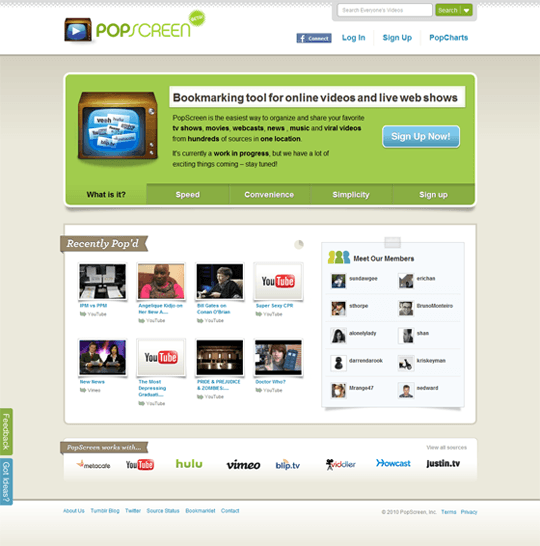
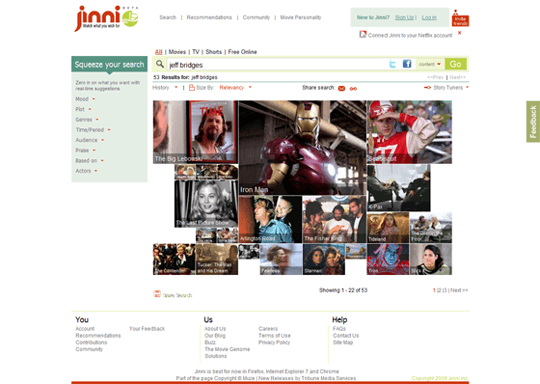

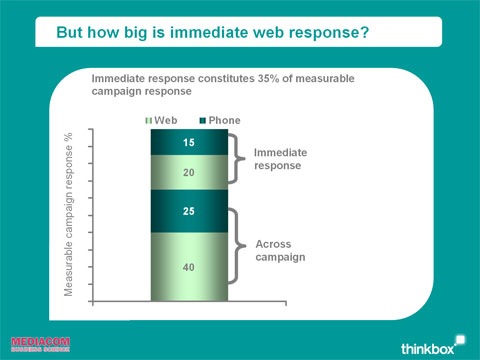
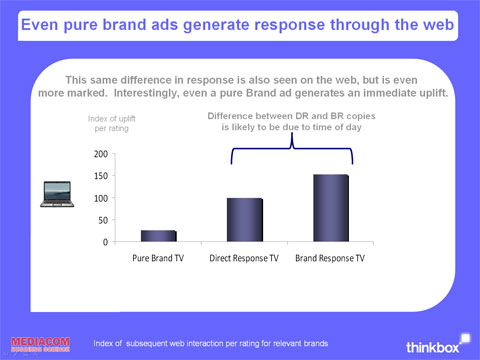
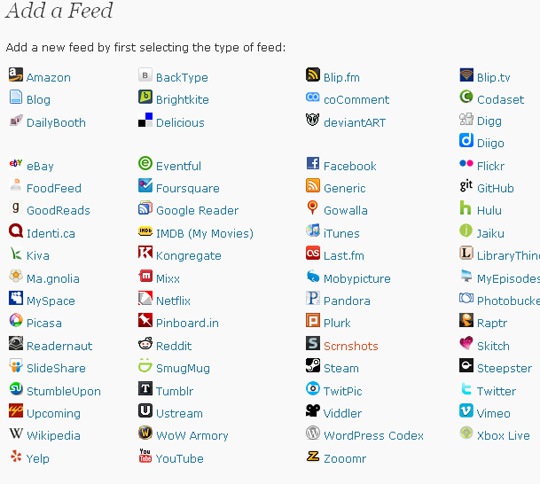
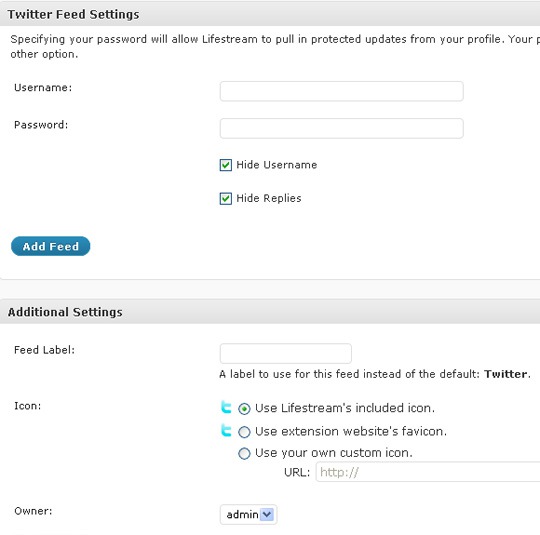
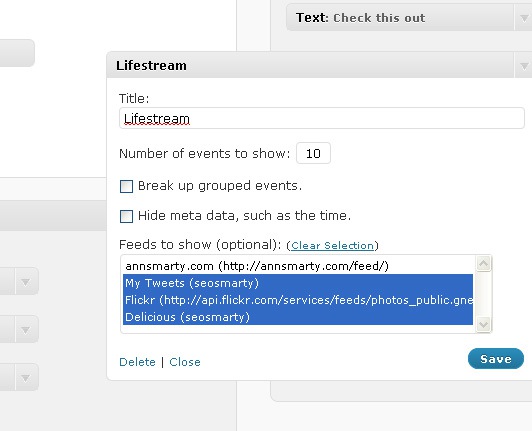


No hay comentarios:
Publicar un comentario